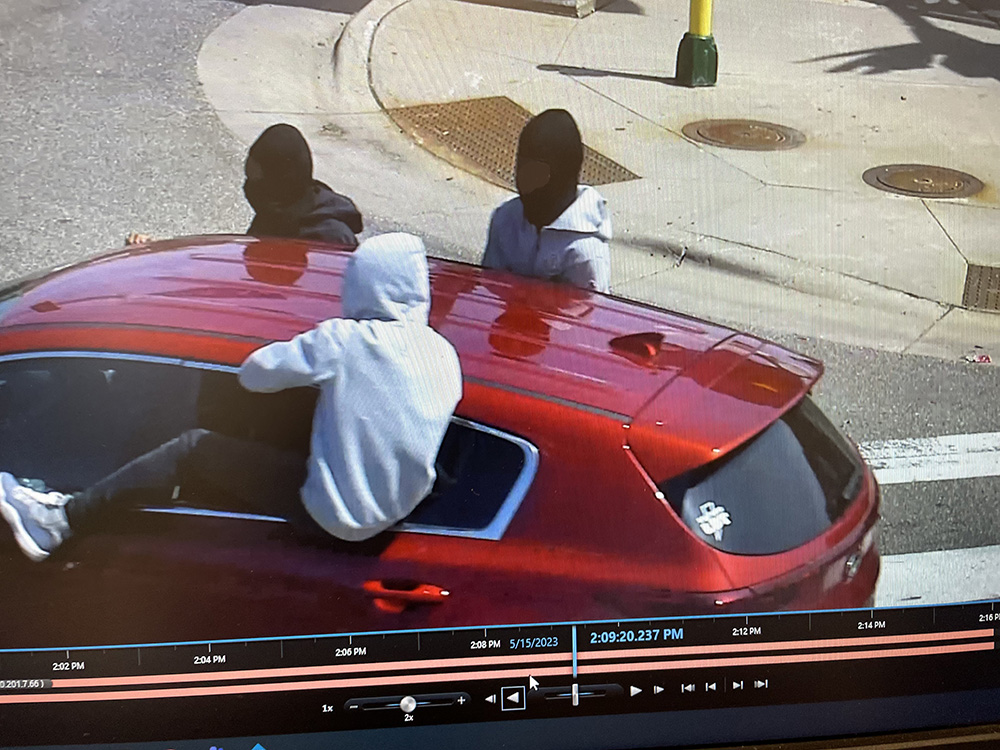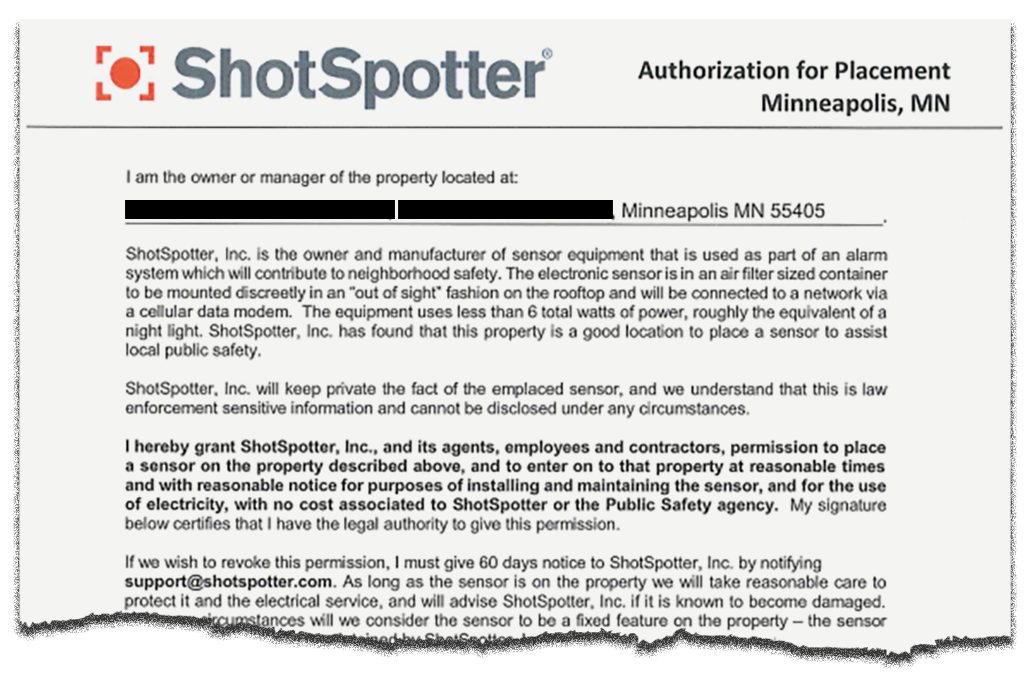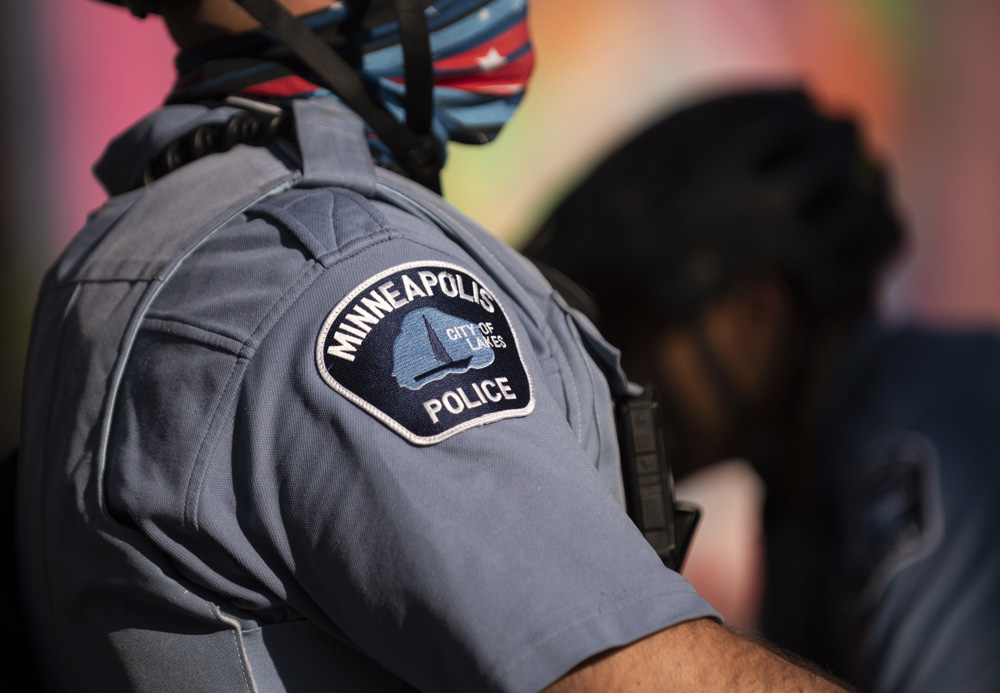Updated, May 31
Shortly after a dozen gunshots erupted from a stolen red SUV on the northside of Minneapolis this month, emergency dispatchers were notified of the drive-by shooting that shattered a window at the school district’s administrative headquarters.
District officials promptly reported the shooting to the cops, who briefly halted their chase when they encountered a school bus dropping off students. A second police report, this one from a California-based surveillance company, had also alerted authorities to the ear-piercing pops.
The incident resulted in the arrest of three teenagers, who were ultimately chased down by cops on foot and a state police helicopter in the air. Shootings and car thefts have surged in Minneapolis over the last several years and, in a press release, Minneapolis Police Chief Brian O’Hara said that out-of-control youth had become “a danger to themselves and to anyone who happens to be around them.”
Yet in some ways, the teenage arrests were an anomaly: The controversial ShotSpotter surveillance sensors that notified police to the blasts, multiple reports have found, rarely direct police to the scenes of firearm crimes. Concerns about ShotSpotter false alarms and their disproportionate effects on Black residents didn’t stop the city’s school district from secretly partnering with the company, an investigation by The 74 has revealed.
For nearly a decade, Minneapolis Public Schools has made northside campus buildings available to bolster a massive surveillance network that peppers neighborhoods with microphones designed to detect, analyze and geolocate gunfire.
Since at least 2014, the school district has agreed to host nondescript ShotSpotter sensors on the rooftops of campus buildings, according to contracts that were leaked as part of a massive cyber attack on Minneapolis Public Schools earlier this year. Six agreements, signed in 2014 and 2019, authorize the sensors to be mounted atop school buildings “in an ‘out of sight’ fashion. The city maintains the primary contract to station ShotSpotter sensors throughout Minneapolis; the school district simply agreed to host the devices on their property. Last year, the city’s latest contract for the sensors totaled $168,000, according to GovSpend, a database that tracks government procurement.

Subjected to a relentless stream of mass school shootings, school districts nationwide spend billions of dollars each year on campus security, including on gun-detection hardware. Yet ShotSpotter’s footprint in education remains largely unknown. The locations of the gun-detection sensors in Minneapolis and urban communities nationwide have for years been intentionally hidden.
In the leaked contracts, Minneapolis school officials agreed to withhold from the public information about its participation in the surveillance program. Details about the sensor locations, officials agreed, “cannot be disclosed under any circumstances.”

In Minneapolis, campus ShotSpotter locations were uncovered during The 74’s investigation into the fallout from the February cyber attack. Highly sensitive information about students and educators, as well as confidential campus security information, were published online in March after the district failed to pay the Medusa cyber gang’s $1 million ransom demand.
ShotSpotter’s efforts to thwart bloodshed from gun violence is commendable, said Teresa Nelson, the legal director of the American Civil Liberties Union of Minnesota. But, she said, privacy and racial disparities in ShotSpotter locations, as well as reports calling into question the sensors’ effectiveness, outweigh their potential benefits. And efforts to withhold the school district’s ShotSpotter agreement from the public, stifle resident’s ability to engage in conversations about how to keep their communities safe, Nelson said.
Ultimately, “it adds a layer to the idea of policing in our schools” that could be problematic, she said. ShotSpotter coverage of schools, she worried, could send police who are “ready for an extremely dangerous confrontation” to campuses “for no reason” due to false alarms from fireworks, backfiring cars and other loud noises.
“That changes the tenor of policing in that area,” she said. “Police have tremendous power and so the community is entitled to know how they’re using that power and how they’re using new technologies that allow them to effectively conduct general mass surveillance.”
The Minneapolis school district didn’t respond to multiple requests for comment. The district has been criticized for not sharing more information with the public about the nature and extent of the breach — its most recent statement on its website is from April 11. It declined interview requests from The 74 for a May 15 investigation about the breach of closely guarded campus security information and didn’t respond to questions for a May 5 article on the leak of highly sensitive information about students and staff.
In an email, Minneapolis Police Department spokesperson Garrett Parten declined to disclose the number of ShotSpotter sensors deployed across Minneapolis, adding that the company selects installation locations. The technology, he said, “has been an excellent tool in aiding the quick location of shooting victims” so they can receive medical attention “when seconds count.”
“In general, ShotSpotter pinpoints the location of gunfire,” Parten said. “This allows officers to respond directly to a location rather than doing a grid search looking for evidence. As such, officers are able to quickly locate and secure evidence that might otherwise be removed, compromised, or missed altogether.”
Thomas Chittum, the senior vice president of analytics and forensic services at ShotSpotter owner SoundThinking, said the data breach in Minneapolis is a rare occurrence but the publicly traded company is taking the incident seriously. Though the sensors are regularly placed on municipal buildings like police departments and schools, he declined to specify how many are stationed on campuses in Minneapolis or nationwide. Sensor locations are confidential, he said, to prevent vandalism, retaliation against businesses and agencies that agree to host the devices, and efforts by gunmen to get around the system.
“Now that these things are known publicly, we have to assess whether or not we think it poses a risk to the efficacy of the system,” said Chittum, who retired last year as acting deputy director of the federal Bureau of Alcohol, Tobacco and Firearms. “The sensors are not hard to relocate but we’ll have to assess whether or not that’s feasible and necessary.”
Few arrests, little evidence of gun-related crimes
Researchers and civil rights groups have warned for years that the technology, which is disproportionately deployed in communities of color, could do more harm than good by routinely sending militarized police into high alert over false alarms. SoundThinking maintains that its ShotSpotter sensors are 97% accurate.
The most comprehensive study on ShotSpotter’s efficacy, published in 2021 in the peer-reviewed Journal of Urban Health, reported dismal findings. The analysis of ShotSpotter in 68 metropolitan counties from 1999 to 2016 found the sensors had no significant impact on firearm-related homicide rates or arrest outcomes.
ShotSpotter deployments have been especially contentious in Chicago, where the sensors are disproportionately installed in neighborhoods with large percentages of Black residents. In more than 31,000 incidents each year, ShotSpotter alerts send Chicago police to locations where they failed to find evidence of gun crimes, according to research by the MacArthur Justice Center at Northwestern University’s law school. Between April 2021 and April 2022, researchers found, 90% of ShotSpotter dispatches failed to find evidence of guns. In a 2022 lawsuit, the group accused the city of relying on a surveillance tool that enables discriminatory policing without a clear public safety benefit.
A separate report from the city’s Office of Inspector General, published in 2021, reached similar results, concluding that the alerts rarely produced evidence of gun-related crimes, investigatory stops or recovered firearms. Yet the sensors led police to make more aggressive stops in certain neighborhoods, the office found, offering fodder for advocates who argue the devices lead to the over-policing of Black residents.
In a company-funded report by Edgeworth Analytics, researchers called the MacArthur analysis “misleading” and concluded that, “based on client reports,” ShotSpotter sensors were 97% effective in detecting gunfire.
Chittum said the sensor locations are selected based on historical crime data and rejected advocates’ concerns over racial disparities.
“The people that balk at the idea that you would deploy public safety infrastructure in the place where it could do the greatest good boggles my mind,” he said. “Of course you’re going to deploy it in the place where it’s most likely to help the people that have had the greatest impact from gun violence. I just don’t understand why you wouldn’t want law enforcement to know about shootings that occur in those neighborhoods.”
While the City of Chicago has long been a key ShotSpotter customer and former Democratic mayor Lori Lightfoot called the tool “a lifesaver,” that could soon change. New progressive Mayor Brandon Johnson campaigned on a promise to end the city’s $33 million ShotSpotter contract, vowing to instead “invest in new resources that go after illegal guns without physically stopping and frisking Chicagoans on the street.” After Johnson’s election, the company’s stock prices tumbled more than 25%.
After weighing the costs against their benefits, officials in several cities — including San Antonio, Texas, and Charlotte, North Carolina — have ended their ShotSpotter subscriptions. In San Antonio, officials spent more than $500,000 for the sensors, an expenditure that led to four arrests and seven weapons seizures in a two-year period.
Similarly in Minneapolis, ShotSpotter alerts have rarely led to arrests or evidence of gun-related crimes, according to a local television news investigation. An analysis found that Minneapolis police responded to about 8,500 ShotSpotter activations from January 2020 to September 2021. About 80% of the time, police didn’t locate evidence of a gun-related crime and only 32 activations — less than 1% of the total — led to an arrest.

On one occasion, in 2012, the city temporarily disabled the sensors on New Year’s Eve because the system became overwhelmed by alerts from the blasts of fireworks.
‘Still losing our young people’
The six Minneapolis campus ShotSpotter locations disclosed in the breach are clustered in the city’s northside. Districtwide, about a third of Minneapolis students are Black. At the campuses where ShotSpotter sensors were disclosed, nearly two-thirds of students are Black.
The roughly 33,000-student district operates just shy of 100 schools. It’s unclear whether the devices were placed at a limited number of district locations or whether information about other campuses that serve as ShotSpotter hosts were spared in the data leak. Though police said ShotSpotter alerted them to the recent drive-by shooting — along with calls from educators — the leaked contracts don’t outline a sensor location at the district’s administrative offices.

While the specific locations of ShotSpotter sensors citywide haven’t been publicly disclosed, residents are well aware of their presence in certain neighborhoods, said Marika Pfefferkorn, a Twin Cities-based student privacy advocate and executive director of the Midwest Center for School Transformation. Yet the devices, she said, haven’t done enough to keep people safe.
“It’s not preventing the shots (from being) fired,” Pfefferkorn said. “We’re still losing our young people.”
In Minneapolis, homicides have surged by 166% since 2019 and the number of gunshot victims has more than doubled, according to city data. More than four-fifths of shooting victims in the city are Black, according to the data, as are 89% of suspects.
Outside Minneapolis, three school districts — one in Texas and two in Massachusetts — have purchased ShotSpotter services, according to GovSpend.
In 2021, the Newark, New Jersey, school district agreed to install the sensors on 30 school buildings in predominantly Black neighborhoods, according to a Chalkbeat investigation. Information about the agreement was removed from the school system’s website after the school board received an email inquiry from the education news outlet.
In a 2022 email also exposed in the Minneapolis data breach, a ShotSpotter employee declined to disclose to a school district facilities official the on-campus locations of its censors, arguing that could allow the information to “fall into the wrong hands.”
“If the location of all sensors became known to the public,” the employee wrote, “criminals would have the capability to disable the gunshot location and detection functionality of the system, or otherwise seriously compromise the law enforcement utility of the system.”
As communities nationwide debate efforts to bolster security in school buildings, parents are demanding a seat at the table, said Kenneth Trump, president of the Cleveland-based National School Safety and Security Services.
Sign-up for the School (in)Security newsletter.
Get the most critical news and information about students' rights, safety and well-being delivered straight to your inbox.
“Parents expect authentic, transparent communication from school officials,” he said. When schools and cities equip communities with emerging security technology, officials “had better be transparent about expectations and limitations, and I’m not sure that’s occurring.”
Ultimately, it’s up to the City of Minneapolis to assess whether the sensors work as intended, said Nelson of the ACLU’s Minnesota chapter.
“Without strict limitations and auditing, we can never really be certain that it’s not being abused,” she said. “There needs to be more transparency and more assurances that it’s not going to be abused.”
Get stories like these delivered straight to your inbox. Sign up for The 74 Newsletter


